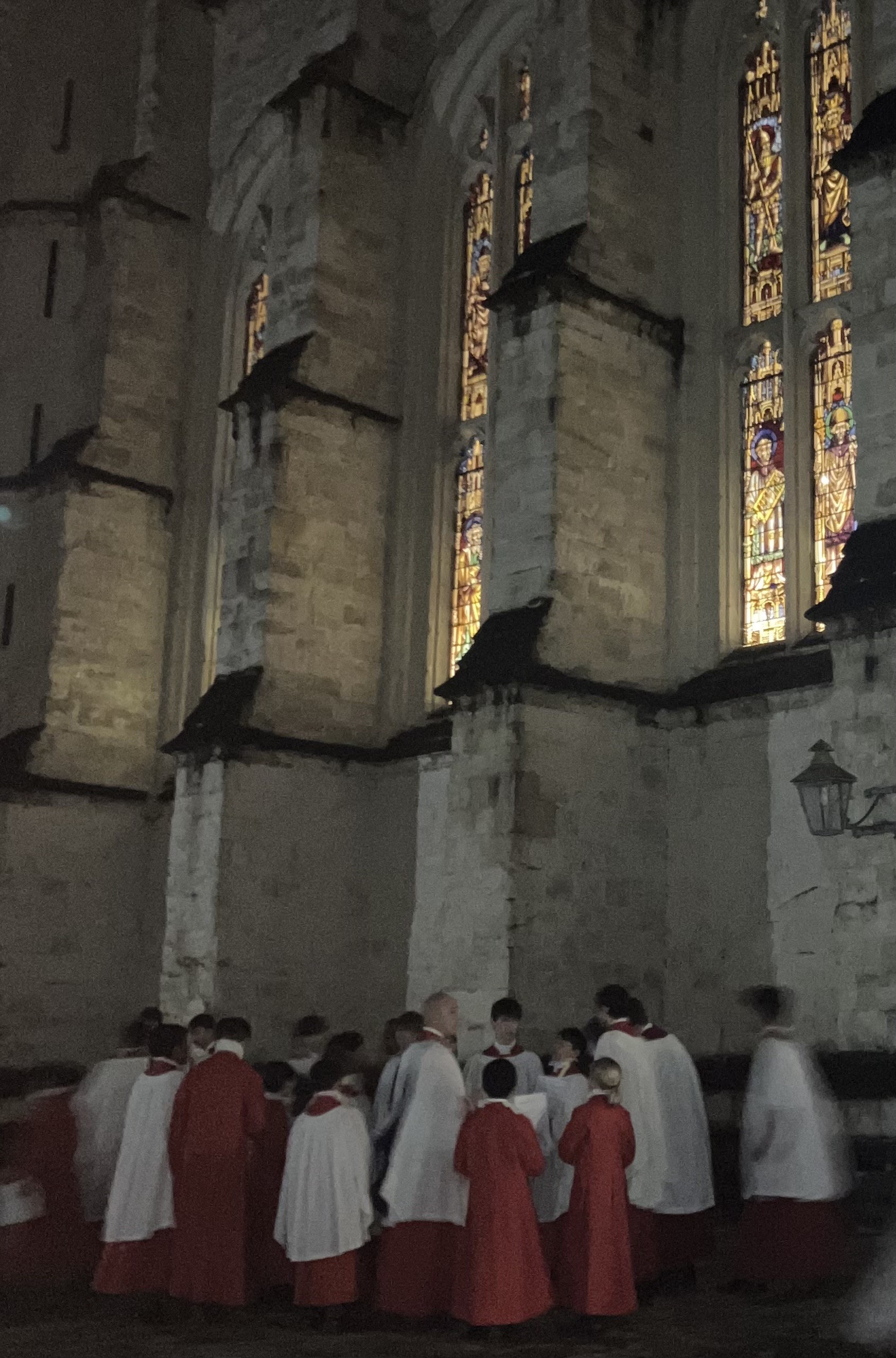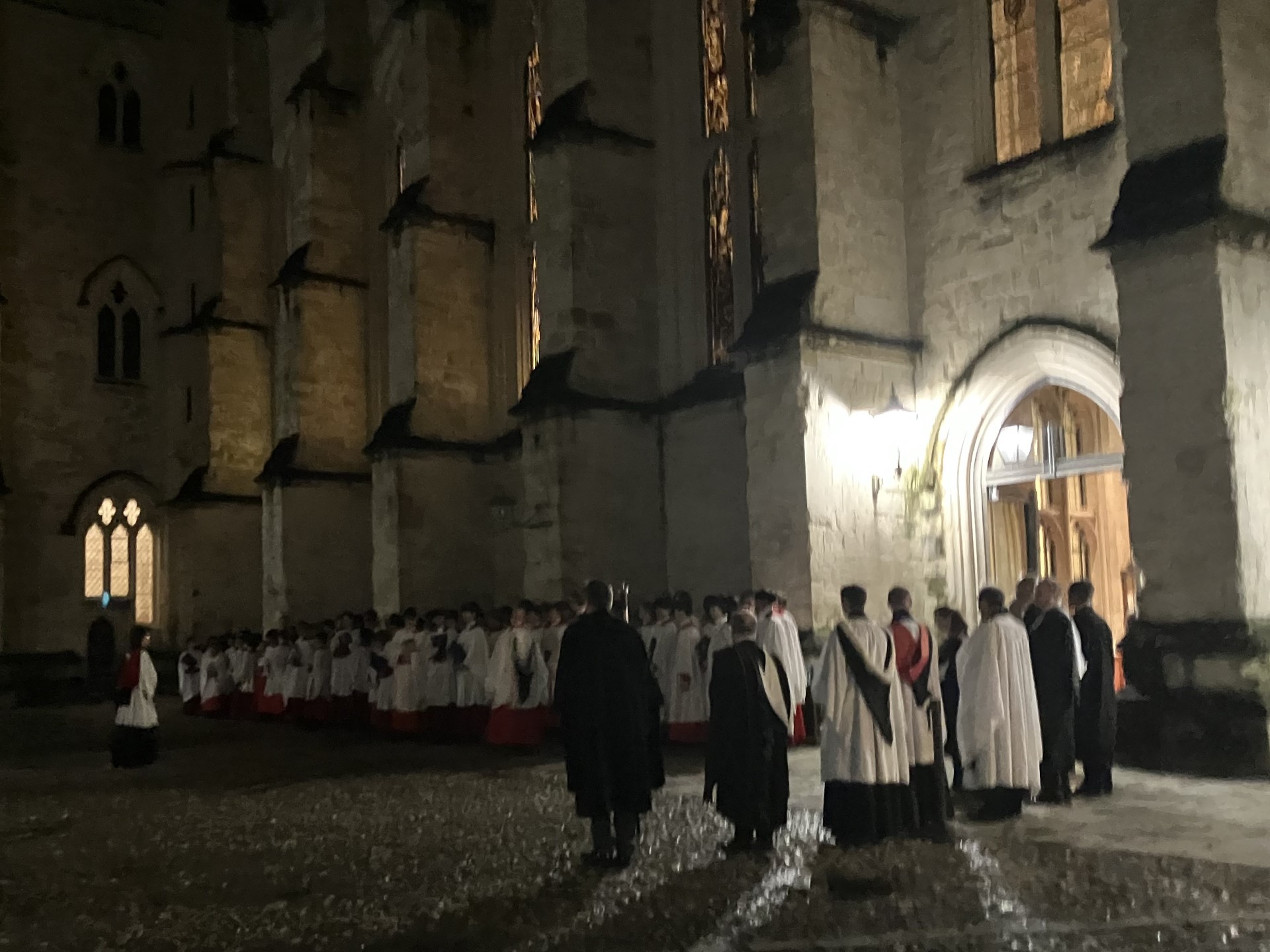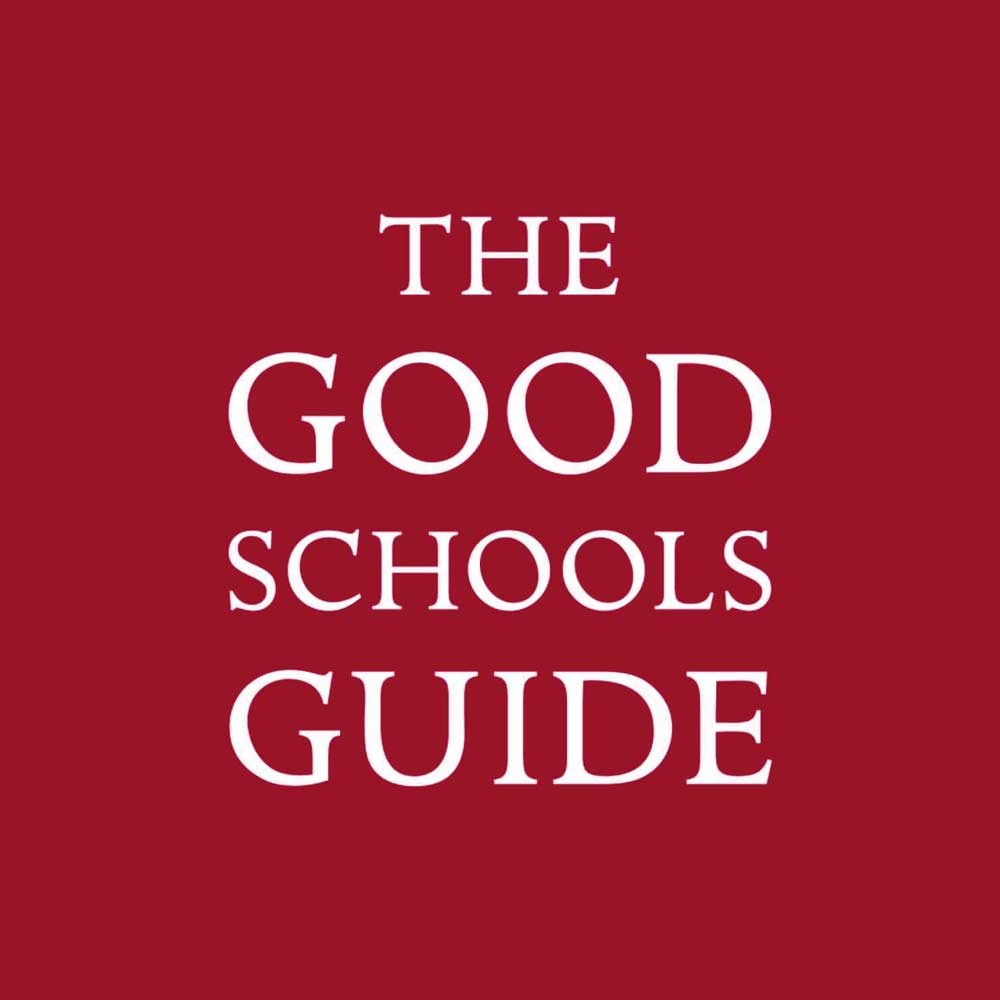Amicabilis Concordia
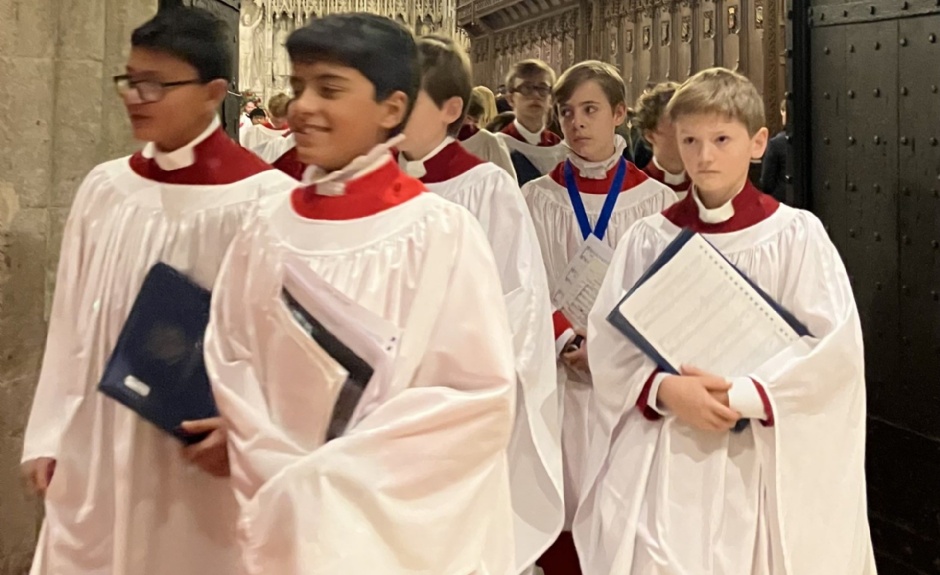
Amicabilis Concordia is a joint choral Evensong with Eton College, held this year on Thursday 9 November.
Eton College is a relatively young institution; well, it is compared to the College of the Blessed Virgin Mary of Winchester. King Henry VI took the latter, founded by Chancellor of England and Bishop of Winchester, William of Wykeham, in 1382, as his model for a school to be founded a royal orb’s throw from Windsor Castle. Similarly, William’s New College at Oxford was mimicked in King’s College Cambridge. The King even poached William Waynflete, the Headmaster of WinColl, to become the first Head Master (sic) of Eton from 1440. And so it was that Waynflete set up the Amicabilis Concordia of 1st July 1444, cementing the camaraderie between those four institutions that is annually celebrated, at least by the two schools, in a joint Choral Evensong.
Yesterday evening, then, the Chapel congregation watched in awe as the, what first appeared to be never-ending, cassocked procession entered and filled all available stalls with the overflow seated at the edges of the Aisle. The Introit was Ola Gjeilo’s 1999 setting of the Ubi Caritas. This set the atmosphere for the service with the most aurally delicious body of unaccompanied voices filling the space. The music was composed as a response to hearing Duruflé’s setting of this ancient text, giving a neat symmetry with last Thursday’s Duruflé Requiem on All Soul’s Day.
The choice of Leighton for the Preces and Responses was a safe favourite for the event. Having taken the Preces at an exhilarating pace there was almost a feeling of relief as the congregation sat to enjoy Sir John Goss’s setting of Psalm 48. This provided further “Quirister” symmetry: Goss was himself a chorister, at the Chapel Royal, but was also an early organist of St Luke’s Chelsea, where the Qs will fulfil their annual Carol Service engagement next month.
Hugh Blair was another chorister, then later organist, at Worcester Cathedral. His setting of the Canticles in B minor was previously unknown to your reviewer which made the revelation of the Magnificat all the more dramatic. Written for double choir, it is a tremendously uplifting piece, perfect for the large forces arrayed at this Evensong, punctuated by secure solos shared between the two choirs. It was followed by the atmospheric Nunc Dimittis in perfect contrast.
An occasion such as this demands an anthem of the scale to match and Sir Edward Bairstow’s ‘Blessed City, Heavenly Salem’ was a fitting choice. Written in 1914 when he was organist of York Minster, it is a setting of the plainsong ‘Urbs Beata’ that initially uses the full forces of organ and large choir. Its five sections are punctuated by organ interludes, with the final portion scored for chorus and treble solo that was, again, shared between boys of the two schools. It provided a magnificent climax to a wonderful Evensong that fittingly celebrated the 679th anniversary of the Amicabilis Concordia.
Mr Cunningham saw us out with a spirited-paced rendition of Walton’s Crown Imperial and the Qs scampered away to their much-anticipated prize of the evening: the rare treat of supper in College Hall.
Jeremy Pett
Quirister parent
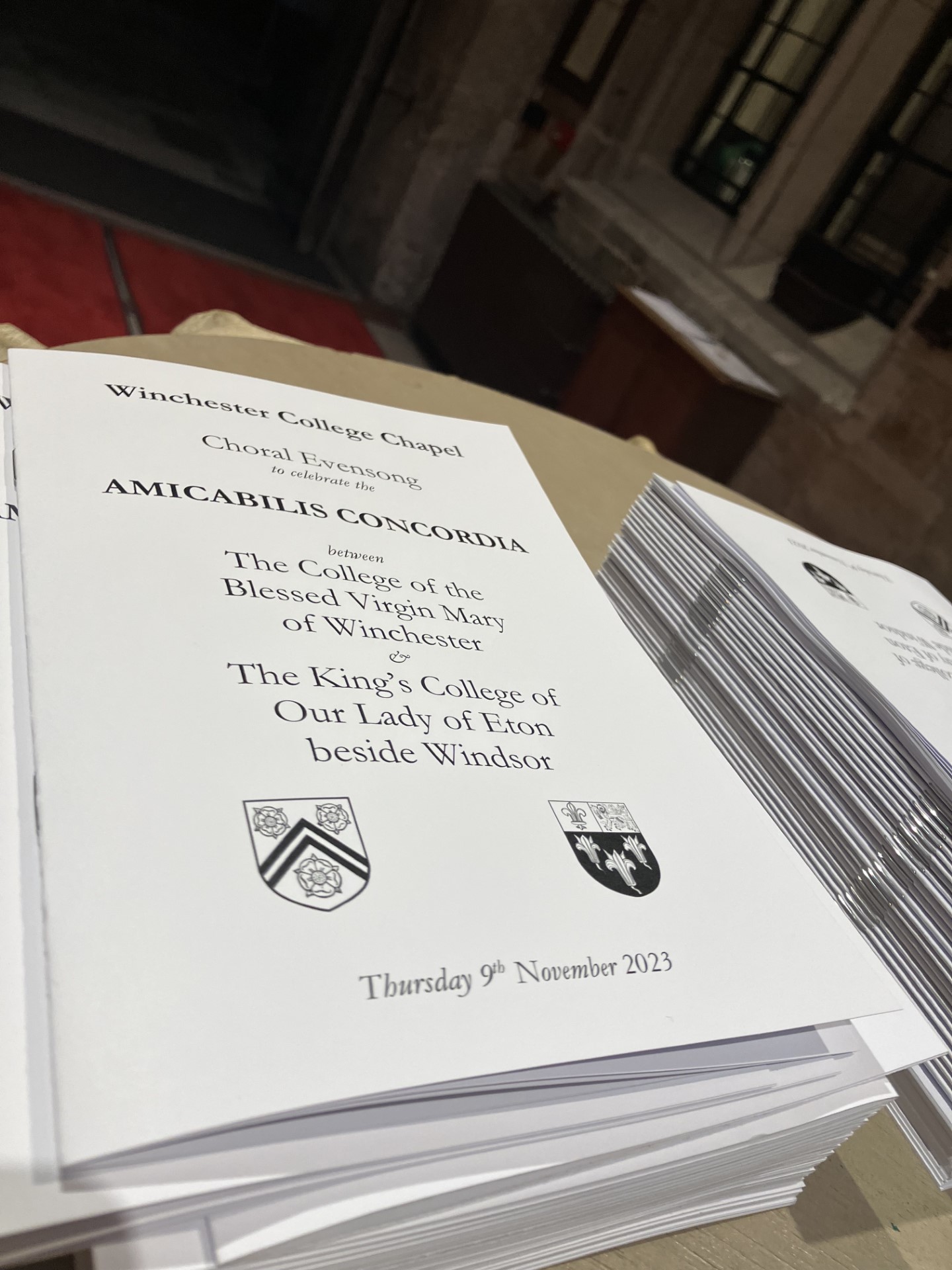
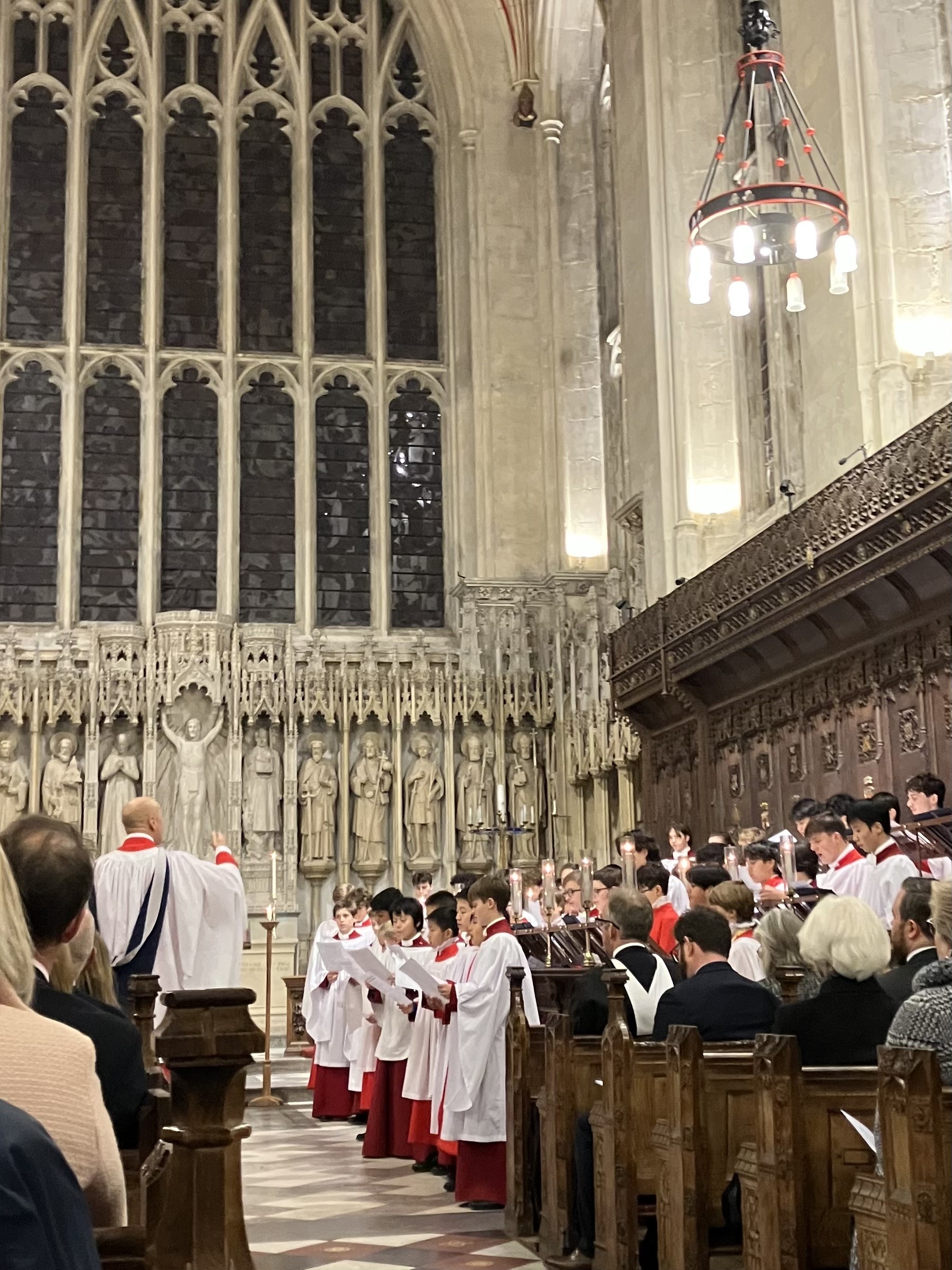
The second column.